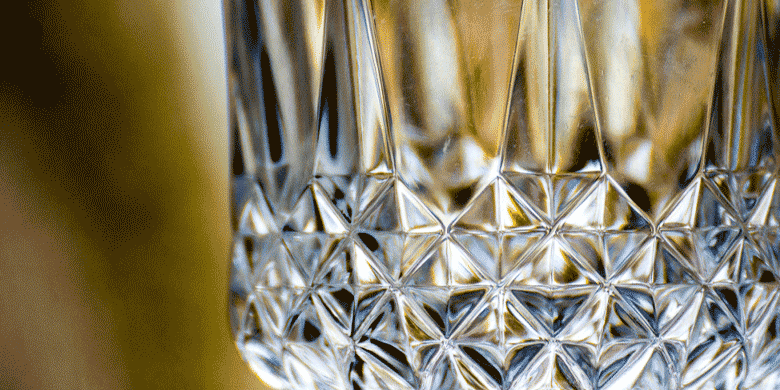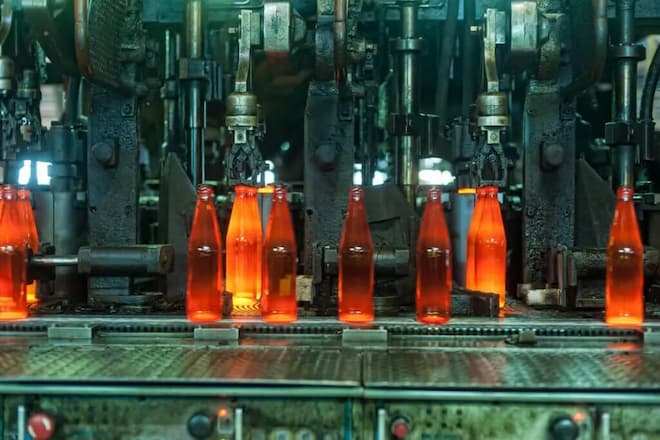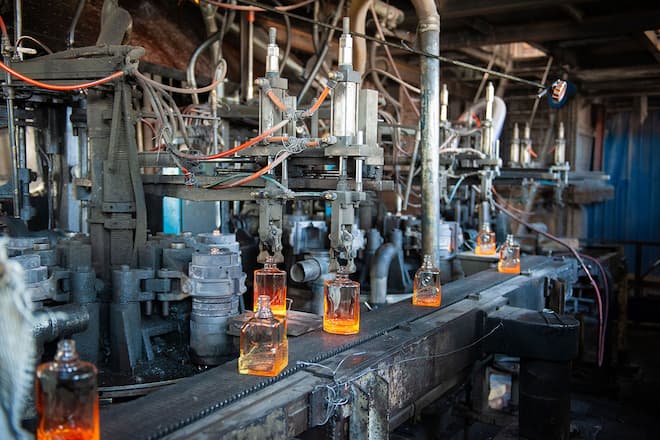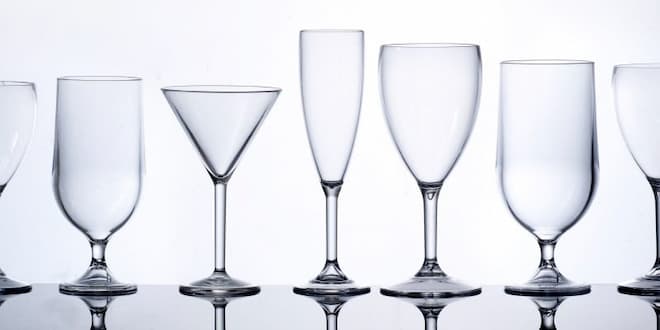
28 November, 2024
Understanding Different Promotional Glassware Materials
The world of promotional glassware is as varied as it is fascinating. From the luxurious gleam of crystal to the practical resilience of polycarbonate, the material of your glassware not only defines its aesthetic but also its purpose and longevity. In this blog, we'll explore the different materials used in glassware, understanding their unique properties and the occasions they best suit.
1. Crystal Glassware: A Blend of Luxury, Brilliance, and Craftsmanship
Crystal glassware, with its unparalleled elegance and shine, has long been a symbol of luxury and sophistication.
Composition and Quality
Lead Crystal: Traditional crystal glassware is often referred to as "lead crystal." The addition of lead oxide to the glass mixture is what gives crystal its famous sparkle. Lead increases the refractive index of the glass, allowing it to catch and disperse light more effectively than regular glass, resulting in a spectrum of light that catches the eye.
Lead-Free Crystal: Due to health concerns associated with lead, many manufacturers now produce lead-free crystal glassware. This type of crystal often includes other metal oxides like barium or zinc, which can mimic the light-refractive properties of lead without the associated health risks. Lead-free crystal is becoming increasingly popular as it combines safety with elegance.
Manufacturing Process
Mixing Raw Materials: It is made by mixing high-quality silica sand with lead oxide or other metal oxides. The precise combination of these materials is what gives crystal its unique properties.
Melting: The mixture is melted in a furnace at extremely high temperatures, usually around 2,400 degrees Fahrenheit (1,320 degrees Celsius). This process fuses the materials together, forming a molten glass that is then ready for shaping.
Moulding and Blowing: The molten glass can be either hand-blown or machine-blown into moulds to create various shapes and designs. Hand-blown crystal is often more valued for its artisanal quality and unique characteristics.
Cutting and Polishing: Once the glass has cooled and solidified, it can be cut into specific designs. Artisans often use diamond-tipped wheels to etch intricate patterns into the crystal. The final step is a thorough polishing, which brings out the glass's signature shine.
Care and Use
Delicate Handling: It is more delicate than regular glass and should be handled with care. It is prone to chipping and cracking if mishandled.
Cleaning: It should ideally be hand-washed rather than placed in a dishwasher. Use a mild detergent and warm water, and dry with a lint-free cloth to avoid water spots and streaks.
Storage: When storing, it's best to place it in a position where it will not be knocked or jostled. Some collectors prefer to display their crystal in a cabinet that showcases its beauty while protecting it from dust and damage.
Usage: It is best reserved for special occasions like formal dinners, celebrations, and important gatherings. Its use adds a touch of luxury and elegance to any event.
Crystal glassware remains a coveted choice for those who appreciate the finer things in life. Its production is an art form, combining meticulous craftsmanship with high-quality materials. While it requires careful handling and maintenance, the beauty and elegance it brings to the table are unmatched, making it a timeless symbol of luxury and sophistication.

2. Soda-Lime Glass - Versatile & Practical Choice
Soda-lime glass is the most ubiquitous type of glassware, found in a variety of everyday applications. Its properties offer a blend of practicality and versatility, making it a staple in households and industries alike.
Composition and Characteristics
Basic Components: It is made primarily from three components: silica sand (silicon dioxide), soda ash (sodium carbonate), and lime (calcium oxide). The silica forms the structural framework of the glass, while the soda ash lowers the melting point, and the lime stabilizes the silica.
Manufacturing Process: The raw materials are melted together at temperatures around 1,700 degrees Celsius. The molten glass is then formed into the desired shape through various processes like blowing, pressing, or drawing.
Properties: This type of glass is characterised by its high thermal expansion coefficient, which makes it less resistant to extreme temperature changes than some other types of glass, like borosilicate. However, it is still more resistant to thermal shock compared to crystal glass.
Durability and Affordability
Everyday Use: It strikes a balance between durability and cost-effectiveness. It is sturdy enough for daily use in products like drinking glasses and bottles.
Cost-Effective Production: The raw materials are readily available and relatively inexpensive, making the production process cost-effective. This affordability is passed on to the consumer, making soda-lime glass products a budget-friendly option.
Eco-Friendly Aspect
Recyclability: One of the key advantages is its eco-friendliness. It is 100% recyclable, and its recycling process is efficient and well-established. The recycled glass can be used to make new glass products without any loss in quality.
Sustainable Production: The ability to incorporate a significant proportion of recycled material (cullet) in the production of new glass reduces the need for raw materials and energy, making the manufacturing process more sustainable.
Versatility in Design
Ease of Moulding: It can be easily moulded and shaped into a wide variety of forms. This versatility allows for a vast range of products, from simple drinking glasses to intricate glass art.
Wide Application: Its ability to be coloured, textured, and treated for different finishes makes it suitable for diverse applications – not just in kitchenware, but also in architecture, automotive, and decorative arts.
It represents the perfect marriage of practicality and versatility in the world of glassware. Its durability, affordability, and eco-friendly nature make it an ideal choice for a multitude of everyday applications. It continues to be an integral and invaluable material in both our daily lives and various industries.

3. Borosilicate Glass: The Durable and Heat-Resistant Choice
Borosilicate glass, recognised for its exceptional durability and heat resistance, plays a crucial role in both domestic and professional settings.
Composition and Characteristics
Chemical Make-Up: It is made by adding boron trioxide to the traditional glassmaking ingredients of silica sand, soda ash, and lime. The boron trioxide allows for a very low thermal expansion coefficient, meaning the glass doesn't expand or contract much with temperature changes.
Manufacturing Process: The process of making it involves melting these components at temperatures around 1,600 degrees Celsius. The high boron content allows it to withstand high temperatures without altering its shape, strength, or clarity.
Heat Resistance
Withstanding Temperature Fluctuations: It is renowned for its ability to withstand significant temperature changes without cracking. This property makes it ideal for applications that require rapid and extreme temperature shifts.
Use in Laboratories: Due to its heat resistance, borosilicate glass is commonly used in laboratory glassware, where it can endure the thermal stress of heating and cooling during experiments.
Durability
Resistance to Thermal Stress: It is less likely to crack under thermal stress compared to soda-lime and crystal glass. This makes it a safer choice for cookware and other applications where glass might be exposed to high temperatures.
Chemical Stability: Apart from being heat resistant, it is also chemically inert. It does not react with most chemicals, making it suitable for storing acidic or alkaline substances.
Applications in Cookware and Beyond
Cookware and Bakeware: It is often used in making cookware and bakeware, such as casserole dishes and baking trays. It can go straight from the freezer to the oven without risk of cracking.
Coffee and Tea Pots: Its thermal properties make it perfect for coffee and tea pots, which are exposed to boiling water and need to maintain temperature without cracking.
Microwave and Oven Safe: Unlike some other glass types, it can be used in microwaves and ovens, making it extremely versatile in the kitchen.
Household and Industrial Applications: Its durability and resistance to chemicals and temperature changes make it suitable for a wide range of industrial applications, including in pharmaceutical labs and even in space exploration.
Borosilicate glass stands out in the world of glassware due to its exceptional heat resistance and durability. It is a material of choice where safety and longevity are paramount, especially in high-temperature environments. From laboratory glassware to kitchen cookware, it provides a reliable and versatile solution, meeting the needs of both rigorous scientific applications and everyday cooking with equal efficacy.

4. Tempered Glass: The Safe and Resilient Choice for Glassware
Tempered glass, known for its strength and safety features, is an ideal material for glassware used in various settings where durability is key.
Strength and Safety
Enhanced Strength: It is about four times stronger than regular glass. This strength is achieved through a process of extreme heating and rapid cooling, which alters the glass's internal structure.
Safety in Breakage: One of its defining features is the way it breaks. Unlike regular glass, which shatters into jagged shards, tempered glass crumbles into small, granular chunks when broken. This characteristic greatly reduces the risk of injury from sharp edges, making it a safer option for glassware.
Thermal Treatment: The process of tempering involves heating the glass to high temperatures (above 600 degrees Celsius) and then rapidly cooling it. This process is what gives it its strength and unique breakage pattern.
Common Uses in Glassware
Everyday Glassware: It is frequently used for everyday glassware like drinking glasses, plates, and bowls. Its strength and durability make it ideal for regular use in households.
Restaurant and Catering Industry: In the hospitality industry, where glassware is subject to frequent use and handling, it is valued for its durability and safety.
Specialty Glassware: Certain types of specialty glassware, such as those used for hot beverages and in microwave-safe cookware, are often made from tempered glass due to its thermal shock resistance.
Resilience
Scratch Resistance: It is more resistant to scratches compared to regular glass. This makes it more suitable for scenarios where glassware is used and cleaned frequently.
Thermal Shock Resistance: It can withstand sudden temperature changes better than standard glass. This quality makes it ideal for use in environments where glassware is exposed to varying temperatures, such as in kitchens and dining areas.
Longevity: Its resilience means it often has a longer lifespan than regular glassware, providing better value over time and reducing the need for frequent replacements.
Tempered glass stands out as a robust and safe choice for glassware. Its enhanced strength and unique safety features, coupled with resistance to scratches and thermal shock, make it an ideal material for glassware in both domestic and commercial settings. Whether it's for daily meals at home or for the high demands of a restaurant, tempered glassware offers a blend of durability, safety, and practicality.

5. Polycarbonate Glassware: Combining Durability with Style
Polycarbonate, a robust and versatile plastic, has emerged as a popular material for glassware, particularly in settings where durability and safety are crucial.
Unbreakable Material
Virtually Unbreakable: It is known for its remarkable durability. This type of plastic is resistant to breakage, even when dropped or handled roughly, making it virtually unbreakable. This quality is particularly beneficial in environments where safety is a priority, and the risk of broken glass must be minimized.
Ideal for Outdoor and High-Risk Settings: Due to its unbreakable nature, it is perfect for outdoor settings like poolside bars, patios, and outdoor events. It's also well-suited for use in busy bars and clubs where the likelihood of glassware being dropped is high.
Lightweight and Durable
Ease of Handling: It is significantly lighter than its glass counterparts, making it easy to handle, carry, and transport. This feature is especially appreciated in settings like catering events and outdoor gatherings where glassware needs to be moved frequently.
Long-Lasting Use: Despite its lightweight, it is remarkably sturdy. It resists scratches and wear and tear, ensuring that the glassware maintains its appearance and functionality over time.
Versatility in Design
Mimicking Real Glass: One of its striking aspects is its ability to closely mimic the look and feel of real glass. This makes it a desirable alternative for those who want the aesthetic appeal of glass without its fragility.
Variety of Styles: it comes in a range of designs and colours. From clear, classic styles that resemble traditional glassware to more modern, coloured options, it offers versatility to match different themes and preferences.
Multipurpose Use: Beyond typical glassware items like drinking glasses and wine goblets, polycarbonate is used in a variety of other products, including pitchers, carafes, and even sophisticated cocktail glasses.
Polycarbonate glassware represents a fusion of practicality and elegance. Its unbreakable nature, combined with its lightweight and durability, makes it a favoured choice in many settings where traditional glassware would pose risks or inconvenience. Whether for casual outdoor gatherings or bustling commercial environments, it offers a safe, stylish, and versatile option that caters to a diverse range of needs and preferences.
Conclusion
Choosing the right glassware material depends on the occasion, the beverage, and practical considerations like durability and care. Crystal brings elegance to special occasions, soda-lime glass is perfect for everyday use, borosilicate excels in heat resistance, tempered glass offers safety and resilience, and polycarbonate provides practicality and durability for outdoor or high-activity environments. Understanding these differences can help you select the perfect glassware for your needs, ensuring not only functionality but also the enhancement of your drinking experience.
The Glassware Only Team



